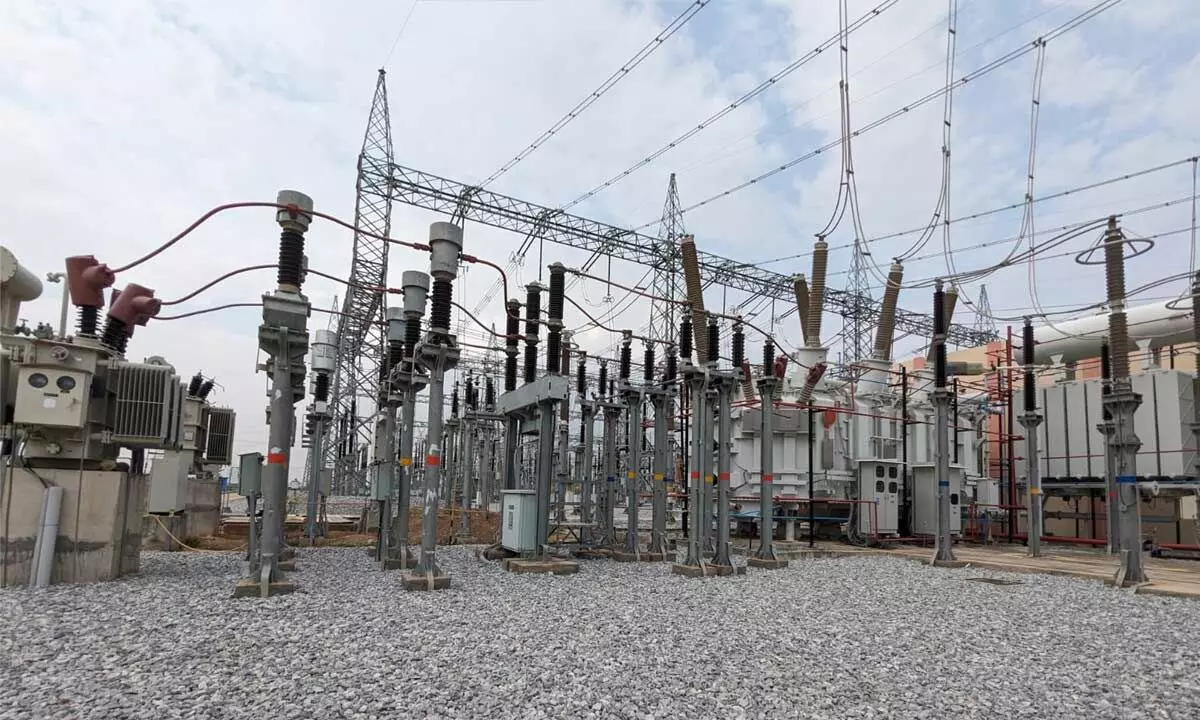Karnataka's Power Production: A Political Perspective

"BJP's lack lustre power production puts the new govt on the spot"
Bengaluru: Karnataka, a state known for its diverse geography and rapid urbanisation, has experienced significant changes in power production over the past decade. the dynamics of power production in Karnataka, with a focus on the years when the Indian National Congress (INC) and the Bharatiya Janata Party (BJP) governed the state.
The statistics clearly show that the momentum in power production and capacity building given by the INC government between 2013-2018 had lagged by 50 percent between 2018-2023. The experts point out that this lag had created the present shortfall in production and supply, due to which the Karnataka state is suffering frequent power outages and poor quality of power.
In the context of Chief Minister Siddaramaiah's remarks on the power crisis in Karnataka, it becomes evident that the political discourse surrounding power generation in the state has been a point of contention. Siddaramaiah blamed the BJP for the power crisis, alleging that the BJP government's misrule had contributed to the situation. He pointed out that the BJP's tenure was the primary reason for today’s power crisis. This statement sets the stage for the observations made below, highlighting the contrast between installed power capacity in the State during the Congress and BJP regimes in Karnataka. II. Observations a. During the Congress regime in Karnataka, the state's power generation capacity witnessed a remarkable increase of 9,172 MW (70%), from 13,006 MW in 2013-14 to 22,178 MW in 2017-18. In contrast, under the BJP's leadership, the growth in power generation capacity was notably more subdued, with a total increase of only 3,101 MW (11%) during their tenure. The shift in governance to BJP in 2019-20 coincided with a change in the rate of growth in power generation capacity, marking a shift in priorities and policies related to electricity infrastructure in Karnataka. Table 1: Year-wise installed capacity of power generation in Karnataka In light of BJP’s failure to augment power capacity during its tenure, Karnataka is grappling with the issue of power crisis
During the INC-led governance from 2013 to 2018, Karnataka's power production witnessed a steady increase. In 2013-14, the state generated 13,006 MWh of power. Over the next three years, power production continued to rise, with notable increases of 16% in 2014-15 and 4.5% in 2015-16. In 2017-18, Karnataka's power production hit 22,178 MWh, showing an impressive growth of 41%.
Table 1: Karnataka's Power Production (in Megawatt Hours, MWh)
| Year | Power Production (MWh) | Change (Year-on-Year) | Ruling Party |
|----------|------------------------|------------------------|-------------------|
| 2013-14 | 13,006 | - | Congress |
| 2014-15 | 15,052 | +2,046 (16%) | Congress |
| 2015-16 | 15,737 | +685 (4.5%) | Congress |
| 2016-17 | Not Available | - | Congress |
| 2017-18 | 22,178 | +6,441 (41%) | Congress |
| 2018-19 | 28,257 | +6,079 (27.4%) | Congress-JD(S) |
| 2019-20 | 29,860 | +1,602 (5.68%) | BJP |
| 2020-21 | 30,004 | +144 (0.5%) | BJP |
| 2021-22 | 31,359 | +1,355 (4.5%) | BJP |
Karnataka's Power Production Growth Under Congress Rule**
| Year | Power Production Growth |
|----------|--------------------------|
| 2014-15 | +2,046 MWh (16%) |
| 2015-16 | +685 MWh (4.5%) |
| 2017-18 | +6,441 MWh (41%) |
*Congress-JD(S) Alliance (2018-2019):*
The coalition government of Congress and the Janata Dal (Secular) (JD(S)) in 2018-19 continued to push for growth in power production. The state's power generation capacity increased by 27.4%, with a total of 28,257 MWh produced in 2018-19.
In 2019-20, Karnataka's power production grew only marginally under the BJP government, reaching 29,860 MWh, marking a 5.68% increase. The trend continued in 2020-21, with a minor growth of 0.5%, resulting in a production of 30,004 MWh. In the most recent data available up to 2021-22, Karnataka produced 31,359 MWh of power, representing a 4.5% growth compared to the previous year.
*Table 3: Power Production Growth Under BJP Rule*
| Year | Power Production Growth |
|----------|--------------------------|
| 2019-20 | +1,602 MWh (5.68%) |
| 2020-21 | +144 MWh (0.5%) |
| 2021-22 | +1,355 MWh (4.5%) |
The data suggests that Karnataka has witnessed consistent growth in power production during 2013-18 but slumped by 50 per cent during 2018-2023,
This growth in power production is a reflection of the state's commitment to providing a stable and growing energy supply to its residents and industries. Moreover, it underscores the state's increasing reliance on renewable energy sources, such as solar and wind power, in alignment with national goals to reduce environmental impact.















